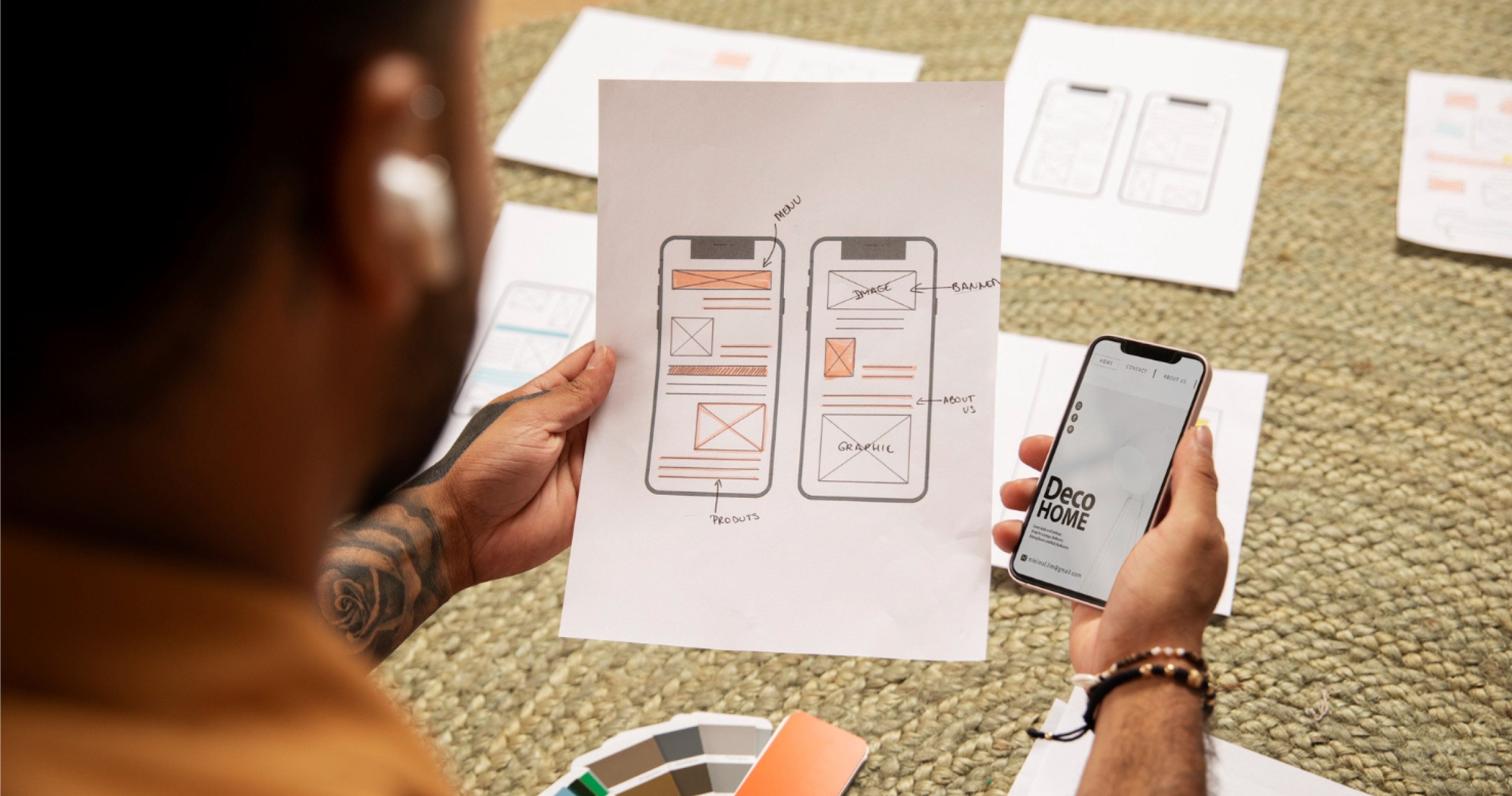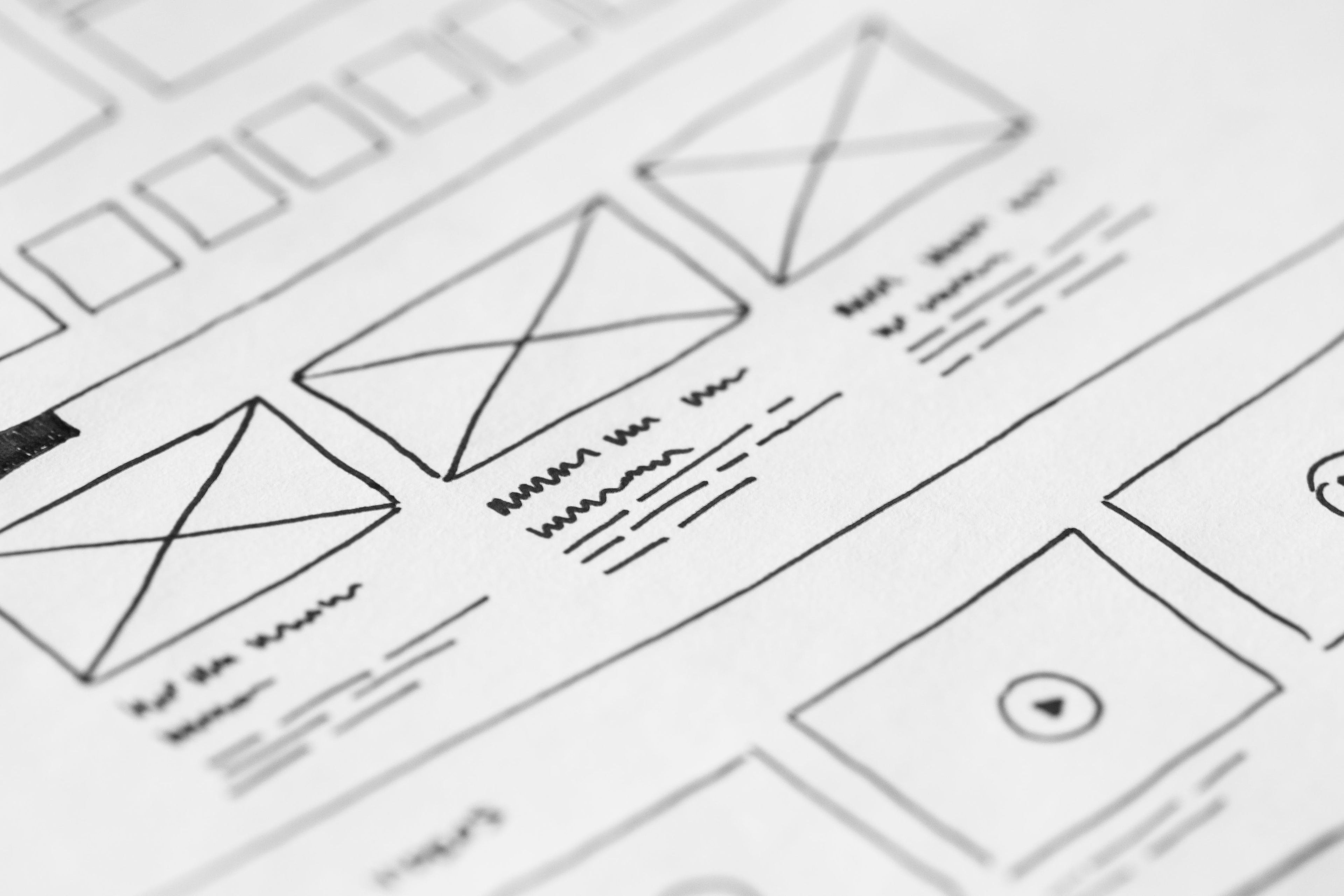Usability: What Is It?
Usability is an essential concept in the design process that covers a range of topics related to making products, websites, and applications easy to use and understand by users. Usability covers user experience, user interface design, user research, user-centered design, and accessibility, among many others.
Usability can also cover different types of usability metrics such as learnability (ease of user experiences when learning how to use a product or website), efficiency (the time it takes potential users to complete a task with a product or website), site memorability (how easily users can remember how to use a product or website), error rate (number of errors experienced by users when using a product or website), satisfaction (measurement of user satisfaction with the product or website). All these topics are essential for creating successful products and websites that are easy to use and enjoyable for users.
Key Elements of Usability

Five quality components determine usability:
- Learnability - How quickly can users master the design for the first time?
- Efficiency - How fast can they perform tasks once they are familiar with them?
- Memorability - When returning to use after an extended break, how easily do they remember what to do?
- Errors – Do mistakes happen, and if so, how serious are these errors, and how easy is it to fix them?
- Satisfaction – What’s their overall experience of using this design?
Usability is an essential attribute of quality UX design. It encompasses the functionality of a product: does it meet end users' needs? Usability and utility should be balanced, as high usability without practical application is useless; similarly, if something can theoretically fulfill user requirements, but its user interface makes it difficult to access those features, its utility drops significantly.
To evaluate the usefulness of a design, you can leverage user research that optimizes usability. Utility defines what features are required for users' return and a successful outcome, whereas usability determines how effortless and satisfying these characteristics are. When utility and usability come together — that's when it becomes useful!
Usability Benefits
The benefits associated with usability include improved customer satisfaction, increased productivity, faster development times, more efficient support systems, and better decision-making processes.
User experience also has implications for businesses because it helps drive innovation by helping companies create intuitive products, identify new growth opportunities through market research, and uncover potential areas of improvement in existing products and services.
Additionally, usability brings cost savings regarding training time and support costs because users can quickly become comfortable using products without extensive training or tutorials.
Finally, good usability makes customers feel valued by showing them they were considered throughout the design process, generating higher loyalty towards digital products and your brand.
Usability in the User Interface Design Process
Usability should be considered during all aspects of the design process, from initial conception to testing and launch stages. During the early stages, ideas should be generated around customer needs and users' goals while taking into account available resources and any technical constraints so that concepts can be assessed from an accessibility standpoint from the start rather than just at the final testing stage when it may be too late to make any meaningful changes efficiently.
During prototyping, designers should collect user feedback and pay special attention to usability metrics such as learnability, efficiency, memorization, error rate, satisfaction, etc., to ensure the prototype meets appropriate standards before developers move on to the coding phase.
Throughout testing cycles, feedback should be collected from real users so that issues related specifically to usability can be identified and addressed quickly. Last, the launching phase should include detailed data gathering on customer usage patterns. This will help identify areas where additional improvements must be made to improve existing users' ease of use and usability.
How to Improve Usability
Usability can be improved in many ways, depending on the product or service's specified context and intended use. Usability experts recommend deeply understanding users’ needs and expectations to ensure that features and interfaces are relevant, efficient, and intuitive. Additionally, user feedback should be collected throughout the design process, from idea generation to the launch phase, to get an accurate picture of how users interact with the design.
When improving usability, designers should focus on key usability principles such as learnability, efficiency, memorization, error rate, satisfaction, etc. Usability metrics can help provide insight into how these elements are performing. Additionally, UX research is essential for uncovering potential pain points and usability issues that would otherwise be difficult to identify through testing alone.
To create designs that meet users' needs while providing a satisfying experience, it's important to apply a mix of qualitative and quantitative data sources such as interviews, surveys, and analytics results. Usability testing is also useful for testing prototypes with real users. This helps identify issues related specifically to usability before developers move on to the coding phase. Usability tests should include tasks designed to measure performance metrics such as time taken to complete tasks or the number of clicks required to complete an action.
Finally, the launching phase should include detailed data gathering on customer usage patterns, which will help identify potential areas where additional usability improvements must be made. A/B testing is an effective way to gather feedback because it compares different versions of a design side by side so designers can assess their effectiveness against established goals and objectives.
Usability Test
Usability testing is an important part of the product development process. It involves doing basic tasks and assessing how intuitively easy it is for real people to understand how something works without needing assistance from external resources like manuals or tutorials. Usability tests are typically conducted with small groups of people who are asked to carry out specific tasks with a given prototype, providing testers with valuable insight into potential problems customers may have when trying to use a product or service offered by a company. Adequately conducted tests allow businesses to identify areas where changes need to be made so that designed products deliver optimal performance desired results. Ultimately, running regular tests helps companies increase their chances of success because they will know exactly what kind of improvements are most beneficial to their customers before going through the full launch cycle.

How to Conduct Usability Testing
Usability tests are typically conducted with small groups of people who carry out specific tasks with a given prototype, providing testers with valuable insight into potential usability problems customers may have when trying to use a product or service offered by a company.
When conducting usability tests, testers should start by deciding on the overall purpose of their test and if there are any specific questions they wish to answer. They can then create scenarios around the product in question and assign tasks that help evaluate how users interact with the product or service. Usability tests can be done in person or remotely (through web conferencing). At the same time, they solve tasks related to their products across multiple devices and operating systems. After gathering data from these tests, testers can analyze the testing results further to identify areas where changes need to be made so that designed products deliver optimal performance desired results.

Another important aspect of usability testing is getting feedback from real users who can provide invaluable insight into how people use a product and what needs improvement and recommend future iterations of the product or service. Usability surveys are also useful for gaining feedback from customers about any improvements they feel could be made before launching a new version of a product or service. Finally, conducting A/B testing helps establish whether changes based on user feedback lead to improved customer satisfaction levels and increased success rates compared to the original design.
What Is Not Considered Usability Testing
Even though certain UX tools aid in improving the customer experience, they don't replicate the user testing process as accurately as detailed user testing tools do. Therefore, these other 'tools' merely qualify for enhancing an already established website's functionality rather than assessing how it performs with actual users.
- A/B testing is a great way to measure the success of different web pages and determine which one is performing best. Unlike usability testing, it's not used to observe and study user behavior; its main purpose is to confirm whether the implemented approach works, though it doesn't reveal why that might be so.
- In contrast, focus groups are typically conducted to understand participants' views on particular products or services - what they think about them as opposed to how they interact with them.
- Utilize surveys to measure user experience. While they are not substitutes for usability testing, as they do not permit seeing visitors in action on the site, surveys may be used alongside it.
- Heat mapping software offers an eye-catching representation showing which parts of a page are most and least popular among users so that developers can observe how people collectively use a website; however, this should still be paired with usability testing.
- Completing user acceptance tests at the end of a software development process ensures that any technical issues are identified and fixed. This quality assurance test does not evaluate how intuitive or efficient the product may be. Still, it confirms that all functions properly within its intended environment.
User Testing VS Usability Testing
User testing and Usability testing are two essential elements of the UX process. While both are used to measure the performance of a product in terms of its usability, they have distinct purposes and approaches.
User testing is a method that studies how users interact with a product or service. It involves observing user behavior while they complete tasks that replicate real-world scenarios. This test evaluates areas such as user satisfaction, usability, and user engagement across different devices. User testing helps identify problems related to specific features or the overall user experience so that developers can focus on improvements that make the product more intuitive and easy to use for customers.

Usability testing is a technique used to evaluate how well users can interact with a product or service. It studies how easily users can understand, navigate, and complete tasks on a given interface. Usability tests can be conducted with small groups of people who carry out specific tasks with a given prototype, providing testers with valuable insight into potential problems customers may have when trying to use a product or service offered by a company. Usability tests involve running participants through scenarios so that testers can observe them as they attempt to carry out different tasks and analyze their performance based on criteria such as task completion rate, time taken, ease of navigation, etc., helping identify any issues related to design or usability which must be improved before launching the product/service into the market.
In conclusion, user testing focuses on understanding customer behavior. In contrast, Usability testing evaluates how well users interact with an interface. Both processes help measure success in customer satisfaction levels and provide insights for creating better customer experiences in future versions of products/services.
Conclusion
In conclusion, usability is an important concept that covers various themes related to making products or website applications user-friendly and enjoyable. All these are relevant businesses depending on the industry domain being worked upon. Usability offers multiple benefits to specified users, including improved customer satisfaction, increased productivity, faster development times, efficient support systems, and better decision-making processes. All these factors play a critical role in ensuring the success of any business providing digital experiences to its target audience or customers.


About Clay
Clay is a UI/UX design & branding agency in San Francisco. We team up with startups and leading brands to create transformative digital experience. Clients: Facebook, Slack, Google, Amazon, Credit Karma, Zenefits, etc.
Learn more

About Clay
Clay is a UI/UX design & branding agency in San Francisco. We team up with startups and leading brands to create transformative digital experience. Clients: Facebook, Slack, Google, Amazon, Credit Karma, Zenefits, etc.
Learn more





